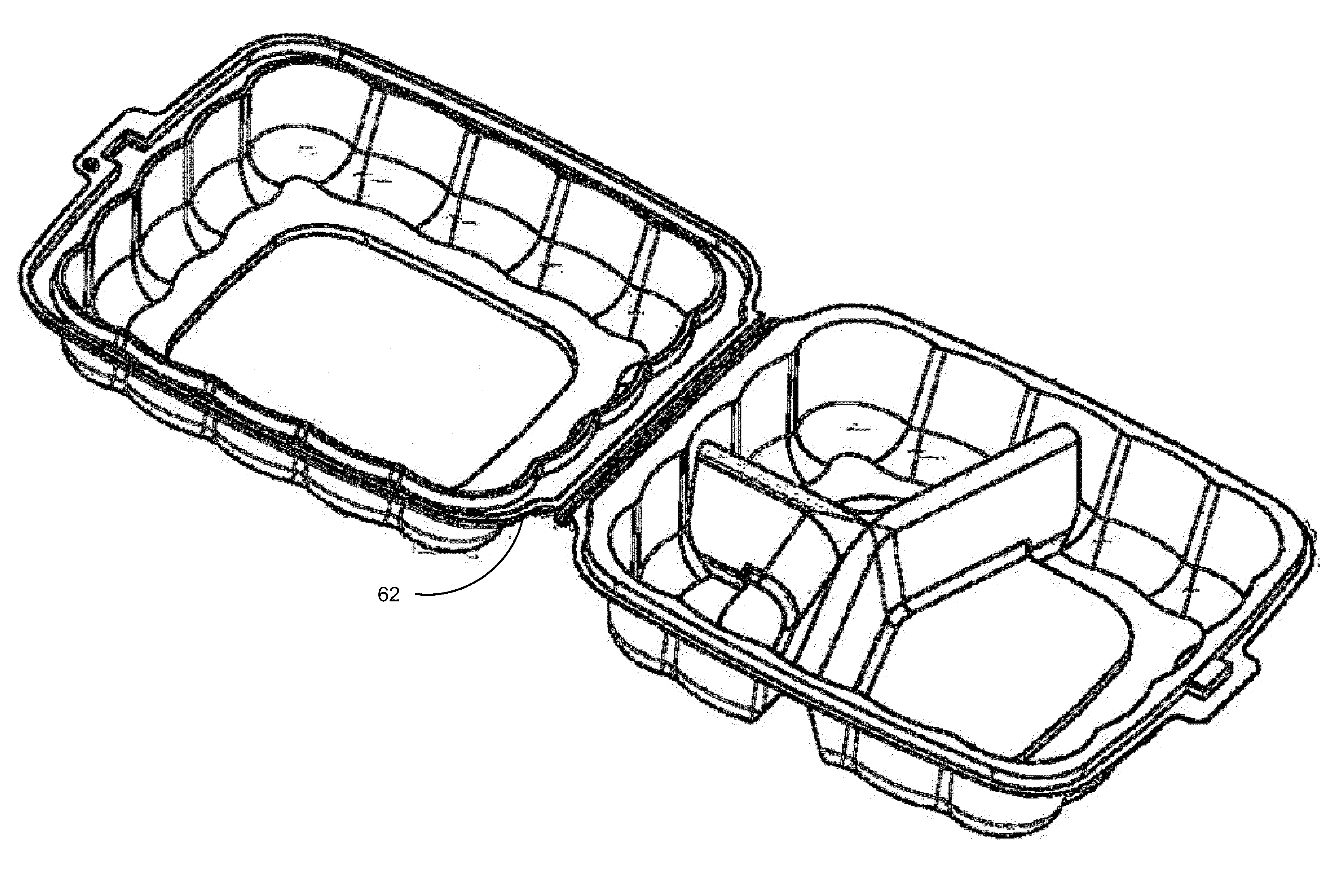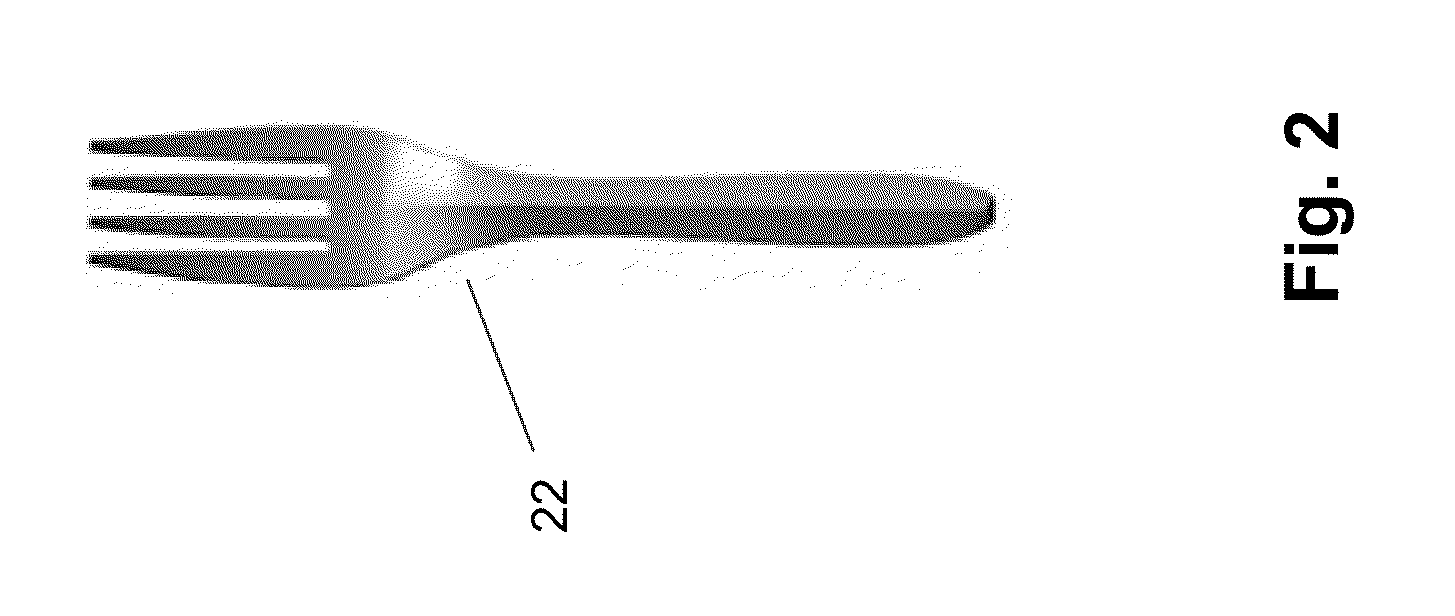High biomass content biodegradable thermoplastic matrix for food contact service items
a biodegradable, food contact technology, applied in packaging, climate sustainability, textiles and papermaking, etc., can solve the problems of inability to remove all oil by-products from plastics, energy-intensive processing, etc., to enhance waterproof competency and heat resistance of items, and enhance the compatibility between corn starch and synthetic polymers.
- Summary
- Abstract
- Description
- Claims
- Application Information
AI Technical Summary
Benefits of technology
Problems solved by technology
Method used
Image
Examples
example
[0024]
Weight PercentIngredient 29%PP 0.8%Glycerol monostearate1.00%Al / Ti Coupling Agent 2%PE WAX 5%EVA 1%Titanium Dioxide 3%LDPE0.02%Benzoyl peroxide0.20%Antioxidant DLTP0.05%Antioxidant 1010 3%Calcium carbonate (800 mesh) 1%Talcum powder 55%Corn Starch
[0025]A bioplastic product made from the starch-containing resin pellets having greater than 50 wt. % biomass (i.e., starch) content exhibits several properties. Such properties include moisture control resulting in no air bubbles; suitability as a food contact material; lower cost resulting from the higher starch content; manufacturability using extrusion; amenability to calendering, thermal formation, and injection molding processes; flexibility; heat resistance to 116° C.; shelf life of over one year; biodegradability; and capability of remelting in an ancillary extrusion system for calendering into rollstock.
[0026]A common type of injection molding machine, such as a Model SE-HDZ manufactured by Sumitomo (SHI) Plastics Mac...
PUM
| Property | Measurement | Unit |
|---|---|---|
| temperature transition | aaaaa | aaaaa |
| temperature transition | aaaaa | aaaaa |
| temperature | aaaaa | aaaaa |
Abstract
Description
Claims
Application Information
 Login to View More
Login to View More - R&D
- Intellectual Property
- Life Sciences
- Materials
- Tech Scout
- Unparalleled Data Quality
- Higher Quality Content
- 60% Fewer Hallucinations
Browse by: Latest US Patents, China's latest patents, Technical Efficacy Thesaurus, Application Domain, Technology Topic, Popular Technical Reports.
© 2025 PatSnap. All rights reserved.Legal|Privacy policy|Modern Slavery Act Transparency Statement|Sitemap|About US| Contact US: help@patsnap.com



